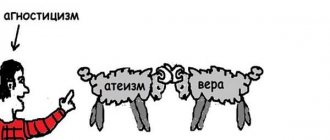4.2
Average rating: 4.2
Total ratings received: 676.
4.2
Average rating: 4.2
Total ratings received: 676.
In 1909, Danish biologist and geneticist Wilhelm Johansen introduced the concepts of genotype and phenotype. Without knowledge of these terms it is impossible to study genetics.
The material was prepared jointly with a teacher of the highest category, candidate of biological sciences Faktorovich Liliya Vitalievna.
More than 31 years of experience as a biology teacher.
What is a genotype?
The concept is used to refer to the genetic structure of an organism. Most genes have two or more different alleles. Their combination forms a gene. It expresses any dominant trait in a couple, and can also reflect a combination of these parameters or show both traits equally.
The combination of two alleles represents the concept under consideration. To designate it, 2 letters are used. The dominant allele is written as a capital letter. In this case, for the recessive allele, the same letter is used, but in lowercase form.
An example is Gregor Mendel's experiments with peas. As a result of research, the scientist noticed that the flowers turn out purple or white. In the first case we are talking about a dominant trait, in the second - about a recessive one. A plant with purple flowers may be referred to as PP or PP. Peas with white flowers are characterized by the designation pp.
Genetic variability can be combinative and mutational. In the first case, we are talking about the exchange of homologous fragments of homologous chromosomes during meiosis. As a result, new combinations of genes arise.
To determine the genotype, genetic analysis is required. In livestock breeding and crop production, analytical crossbreeding is used to isolate the required gene.
All people are different
It is impossible to find two identical people on the entire planet Earth. Each person will have his own genotype and phenotype.
This can be observed under certain conditions, for example, if a resident of Africa is sent to work in the tundra, and a person accustomed to cold weather is sent to a hot country. It is impossible to say that the work will be done efficiently and the experiment will be crowned with success, because the geographical factor is the main difference in identifying the genotype and phenotype.
Another difference is the historical factor, since in the process of evolution the cultures of different people united and began to exist in a completely different form. Each nation will lead its own way of life.
People differ in social factors. Everyone has their own level of culture and education. Already in ancient times, one could talk about a significant difference in the genotype and phenotype of a nobleman and an ordinary person.
There is also an economic factor. A person’s needs greatly depend on his wealth.
Genotype and phenotype are different concepts, but they cannot exist without each other.
All people are different. And you can always emphasize your individuality with the help of intelligence. Vikium simulators are great for developing intelligence and cognitive abilities.
Source
What is a phenotype?
This term refers to a trait that is manifested by coding in the genotype. Phenotype is used to refer to the actual physical characteristics that an organism exhibits.
To understand this concept, it is also worth considering the example of peas. If a plant has a dominant allele for purple flowers, the phenotype will be purple. If the genotype had one allele for purple and one recessive allele for white, the phenotype would still be purple. In this situation, the dominant allele for purple causes the recessive allele for white to be masked.
As an example of the external features of the concept under consideration, the following is worth citing:
- hair structure;
- eye shade and shape;
- size and shape of ears;
- appearance of the nose.
There are also internal signs:
- anatomical – these include the structure and localization of internal organs;
- physiological - this group includes the structure and functioning of cells;
- biochemical - we are talking about the structure of protein, the influence of enzymes, the composition of hormones.
Genetics and selection
Genetics
- a science that studies the heredity and variability of organisms.
Heredity
is the ability of organisms to transmit their characteristics (features of structure, function, development) from generation to generation.
Variability
is the ability of organisms to acquire new characteristics. Heredity and variability are two opposing but interrelated properties of an organism.
Heredity
Basic concepts
Gene and alleles.
The unit of hereditary information is the gene.
A gene
(from the point of view of genetics) is a section of a chromosome that determines the development of one or more traits in an organism.
Alleles
are different states of the same gene, located in a certain locus (region) of homologous chromosomes and determining the development of one particular trait. Homologous chromosomes are present only in cells containing a diploid set of chromosomes. They are not found in the sex cells (gametes) of eukaryotes or prokaryotes.
Sign (hairdryer)
- some quality or property by which one organism can be distinguished from another.
Dominance
is the phenomenon of predominance of the trait of one of the parents in a hybrid.
A dominant trait
is a trait that appears in the first generation of hybrids.
A recessive trait
is a trait that outwardly disappears in the first generation of hybrids.
Dominant and recessive traits in humans
G. Mendel's laws
Mendel's first law.
G. Mendel crossed pea plants with yellow seeds and pea plants with green seeds. Both were pure lines, that is, homozygotes.
Mendel's first law is the law of uniformity of first generation hybrids (law of dominance):
When pure lines are crossed, all first-generation hybrids exhibit one trait (dominant).
Mendel's second law.
After this, G. Mendel crossed the first generation hybrids with each other.
Mendel's second law is the law of splitting of characters:
Hybrids of the first generation, when crossed, are split in a certain numerical ratio: individuals with a recessive manifestation of the trait make up 1/4 of the total number of descendants.
Cytological basis of the uniformity of the first generation and the splitting of characters in the second generation
consist in the divergence of homologous chromosomes and the formation of haploid germ cells in meiosis.
The hypothesis (law) of gamete purity
states: 1) during the formation of germ cells, only one allele from an allelic pair enters each gamete, that is, the gametes are genetically pure;
2) in a hybrid organism, genes do not hybridize (do not mix) and are in a pure allelic state. Statistical nature of splitting phenomena.
From the hypothesis of gamete purity it follows that the law of segregation is the result of a random combination of gametes carrying different genes.
Given the random nature of the connection of gametes, the overall result turns out to be natural. It follows that in monohybrid crossing the ratio of 3:1 (in the case of complete dominance) or 1:2:1 (in the case of incomplete dominance) should be considered as a pattern based on statistical phenomena. This also applies to the case of polyhybrid crossing. Accurate implementation of numerical relationships during splitting is possible only with a large number of hybrid individuals being studied. Thus, the laws of genetics are statistical in nature. Analysis of offspring.
Test crossbreeding allows you to determine whether an organism is homozygous or heterozygous for a dominant gene.
To do this, an individual whose genotype must be determined is crossed with an individual homozygous for the recessive gene. Often one of the parents is crossed with one of the offspring. Such crossing is called return crossing
. In the case of homozygosity of the dominant individual, splitting will not occur:
In the case of heterozygosity of the dominant individual, splitting will occur:
Mendel's third law.
G. Mendel carried out a dihybrid crossing of pea plants with yellow and smooth seeds and pea plants with green and wrinkled seeds (both are pure lines), and then crossed their descendants. As a result, he found that each pair of traits, when split in the offspring, behaves in the same way as in a monohybrid cross (splits 3:1), that is, independently of the other pair of traits.
Mendel's third law
- the law of independent combination (inheritance) of traits: splitting for each trait occurs independently of other traits.
Cytological basis of independent combination
is the random nature of the divergence of homologous chromosomes of each pair to different poles of the cell during the process of meiosis, regardless of other pairs of homologous chromosomes. This law is only valid if the genes responsible for the development of different traits are located on different chromosomes. Exceptions are cases of linked inheritance.
Chained inheritance. Loss of adhesion
The development of genetics has shown that not all traits are inherited in accordance with Mendel's laws. Thus, the law of independent inheritance of genes is valid only for genes located on different chromosomes. The patterns of linked inheritance of genes were studied by T. Morgan and his students in the early 20s. XX century The object of their research was the fruit fly Drosophila (its lifespan is short, and several dozen generations can be obtained in a year; its karyotype consists of only four pairs of chromosomes). Morgan's Law:
genes localized on the same chromosome are inherited predominantly together.
Linked genes
are genes that lie on the same chromosome.
A linkage group
is all genes on the same chromosome.
In a certain percentage of cases, adhesion may be broken. The reason for the disruption of cohesion is crossing over (crossing of chromosomes) - the exchange of chromosome sections in prophase I of the meiotic division. Crossing over leads to genetic recombination
.
The farther genes are located from each other, the more often crossing over occurs between them. genetic maps
is based on this phenomenon - determining the sequence of genes on a chromosome and the approximate distance between them.
Genetics of sex
Autosomes
- chromosomes that are the same in both sexes.
Sex chromosomes (heterochromosomes)
are chromosomes on which male and female sexes differ from each other. A human cell contains 46 chromosomes, or 23 pairs: 22 pairs of autosomes and 1 pair of sex chromosomes. Sex chromosomes are referred to as X and Y chromosomes. Women have two X chromosomes, and men have one X and one Y chromosome. There are 5 types of chromosomal sex determination.
Types of chromosomal sex determination
| Signs | |
| dominant | recessive |
| Dwarfism | Normal height |
| Polydactyly (polydactyly) | Norm |
| Curly hair | Straight hair |
| Not red hair | Red hair |
| Early baldness | Norm |
| Long eyelashes | Short eyelashes |
| Large eyes | Small eyes |
| Brown eyes | Blue or gray eyes |
| Myopia | Norm |
| Twilight vision (night blindness) | Norm |
| Freckles on the face | No freckles |
| Normal blood clotting | Poor blood clotting (hemophilia) |
| Color vision | Lack of color vision (color blindness) |
| Type | Examples |
| ♀ XX, ♂ ХY | Characteristic of mammals (including humans), worms, crustaceans, most insects (including fruit flies), most amphibians, some fish |
| ♀ XY, ♂ XX | Characteristic of birds, reptiles, some amphibians and fish, some insects (Lepidoptera) |
| ♀ XX, ♂ X0 | Occurs in some insects (orthoptera); 0 means no chromosomes |
| ♀ X0, ♂ XX | Found in some insects (homoptera) |
| haplo-diploid type (♀ 2n, ♂ n) | It is found, for example, in bees and ants: males develop from unfertilized haploid eggs (parthenogenesis), females from fertilized diploid eggs. |
Sex-linked inheritance
- inheritance of traits whose genes are located on the X and Y chromosomes.
Sex chromosomes may contain genes that are not related to the development of sexual characteristics. In an XY combination, most genes found on the X chromosome do not have an allelic pair on the Y chromosome. Also, genes located on the Y chromosome do not have alleles on the X chromosome. Such organisms are called hemizygous
. In this case, a recessive gene appears, which is present in the singular in the genotype. Thus, the X chromosome may contain a gene that causes hemophilia (reduced blood clotting). Then all males who received this chromosome will suffer from this disease, since the Y chromosome does not contain a dominant allele.
Blood genetics
According to the ABO system, people have 4 blood groups. The blood group is determined by gene I. In humans, the blood group is determined by three genes IA, IB, I0. The first two are codominant in relation to each other, and both are dominant in relation to the third. As a result, a person has 6 blood groups according to genetics, and 4 according to physiology.
| Group I | 0 | I 0 I 0 | homozygote |
| Group II | A | I A I A | homozygote |
| I A I 0 | heterozygote | ||
| III group | IN | I B I B | homozygote |
| I B I 0 | heterozygote | ||
| IV group | AB | I A I B | heterozygote |
Different peoples have different ratios of blood groups in the population.
Distribution of blood groups according to the AB0 system in different nations,%
| Nationality | 0 (I) | A (II) | B (III) | AB (IV) |
| Australians | 54,3 | 40,3 | 3,8 | 1,6 |
| English | 43,5 | 44,7 | 8,6 | 3,2 |
| Arabs | 44 | 33 | 17,7 | 5,3 |
| Hungarians | 29,9 | 45,2 | 17 | 7,9 |
| Dutch | 46,3 | 42,1 | 8,5 | 3,1 |
| Indians | 30,2 | 24,5 | 37,2 | 8,1 |
| Chinese | 45,5 | 22,6 | 25 | 6,9 |
| Russians | 32,9 | 35,8 | 23,2 | 8,1 |
| Japanese | 31,1 | 36,7 | 22,7 | 9,5 |
Distribution of Rh factor among different peoples,%
| Nationality | Rh positive | Rh negative |
| Australian Aboriginals | 100 | 0 |
| American Indians | 90–98 | 2–10 |
| Arabs | 72 | 28 |
| Basque | 64 | 36 |
| Chinese | 98–100 | 0–2 |
| Mexicans | 100 | 0 |
| Norse | 85 | 15 |
| Russians | 86 | 14 |
| Eskimos | 99–100 | 0–1 |
| Japanese | 99–100 | 0–1 |
The Rh factor of the blood is determined by the R gene. R + gives information about the production of protein (Rh-positive protein), but the R gene does not. The first gene is dominant over the second. If Rh + blood is transfused to a person with Rh – blood, then specific agglutinins are formed in him, and repeated administration of such blood will cause agglutination. When an Rh woman develops a fetus that has inherited Rh positive from the father, an Rh conflict may occur. The first pregnancy, as a rule, ends safely, and the second one ends in illness of the child or stillbirth.
Gene interaction
A genotype is not just a mechanical set of genes. This is a historically established system of genes interacting with each other. More precisely, it is not the genes themselves (sections of DNA molecules) that interact, but the products formed from them (RNA and proteins). Both allelic and non-allelic genes can interact. Interaction of allelic genes:
complete dominance, incomplete dominance, co-dominance.
Complete dominance
is a phenomenon when a dominant gene completely suppresses the work of a recessive gene, resulting in the development of a dominant trait.
Incomplete dominance
is a phenomenon when a dominant gene does not completely suppress the recessive gene, resulting in the development of an intermediate trait.
Codominance
(independent manifestation) is a phenomenon when both alleles participate in the formation of a trait in a heterozygous organism.
In humans, the gene that determines blood type is represented by a series of multiple alleles. In this case, the genes that determine blood groups A and B are codominant in relation to each other, and both are dominant in relation to the gene that determines blood group 0. Interaction of non-allelic genes:
cooperation, complementarity, epistasis and polymerization.
Cooperation
is a phenomenon when, through the mutual action of two dominant non-allelic genes, each of which has its own phenotypic manifestation, a new trait is formed.
Complementarity
is a phenomenon when a trait develops only through the mutual action of two dominant non-allelic genes, each of which individually does not cause the development of the trait.
Epistasis
is a phenomenon when one gene (both dominant and recessive) suppresses the action of another (non-allelic) gene (both dominant and recessive).
The suppressor gene can be dominant (dominant epistasis) or recessive (recessive epistasis). Polymerism
is a phenomenon where several non-allelic dominant genes are responsible for similar effects on the development of the same trait.
The more such genes are present in the genotype, the more pronounced the trait is. The phenomenon of polymerization is observed during the inheritance of quantitative traits (skin color, body weight, milk yield of cows). In contrast to polymerization, there is a phenomenon known as pleiotropy
—multiple gene action, when one gene is responsible for the development of several traits.
Chromosomal theory of heredity
Basic provisions of the chromosomal theory of heredity:
Non-chromosomal inheritance
According to the chromosomal theory of heredity, the DNA of chromosomes plays a leading role in heredity. However, DNA is also contained in mitochondria, chloroplasts and in the cytoplasm. Non-chromosomal DNAs are called plasmids
. Cells do not have special mechanisms for uniform distribution of plasmids during division, so one daughter cell can receive one genetic information, and the second - completely different. The inheritance of genes contained in plasmids does not obey Mendelian laws of inheritance, and their role in the formation of the genotype has not yet been studied enough.
Source
Difference between genotype and phenotype
There is a strong relationship between the concepts under consideration. Thus, the genotype influences the phenotype. However, external factors have a much greater impact on the second concept.
At the same time, the terms under consideration differ significantly from each other. The main differences between them are as follows:
- The genotype includes the genetic data of an organism in the form of a gene, which is found in DNA. It remains constant throughout life. Phenotype represents overt traits that are considered to be expressions of genes. However, they change over time. An example is the change in a person from an infant to an adult.
- Genotype refers to genetic material. It is found in the cells of the body. In some cases, a different genotype may create the same phenotypes. However, when it comes to phenotype, even minor differences will have a new genotype. They are recognized as a person's appearance.
- The genotype includes hereditary manifestations. However, they may or may not be passed on to subsequent generations. One genotype produces the same phenotype in a particular environment. But in the case of a phenotype, inheritance of traits does not occur.
- Physical signs such as height, eye color or hair color can be detected visually. To identify genetic manifestations, it is worth using scientific tools - in particular, the polymerase chain reaction. It allows you to determine the type of genes.
- In the case of genotype, partial inheritance occurs from the individual to the offspring as one of two alleles during reproduction. The phenotype is a manifestation of a hereditary trait of the parent, but is not inherited.
The differences also affect variability during life. According to the phenotype, this parameter is called modification or phenotypic. It is acquired throughout life, but cannot be inherited. Genotypic variability is divided into the following types:
- combinative – represents the formation of new gene combinations during meiosis;
- mutational – these are abrupt changes in genes that are inherited.
History of the emergence of concepts
The works of Charles Darwin became the main impetus in the development of the science of heredity and variability. He was the first to put forward the hypothesis of the separation of cells in the body, from which another individual emerges as a result. Thus, Darwin began to develop the theory of pangenesis and his work as a result became the impetus for the development of the science of heredity and variability.
In 1865, G. Mendel managed to formulate the basic laws of genetics by conducting experiments with different varieties of peas: the law of uniformity of first-generation hybrids, the law of segregation, the law of independent inheritance of traits. The date of birth of genetics is attributed to 1900; its term was proposed by W. Batson in 1906. Based on an already known concept, in 1909. Wilhelm Johansen introduced the concept of "gene". Around the same period, he introduced the concept of “phenotype,” thereby emphasizing the hereditary characteristics of genetics.
Later, the German zoologist W. Hacker studied the relationship between the genotypes and phenotypes of organisms, which was later called phenogenetics.
In general, the history of the development of genetics has a rich past; it is divided into three stages:
Stage 1 (1900-1930). The period of classical genetics, Mendelism. Natural discrete heredity has been established. The chromosome theory and the theory of mutations were created.
Stage 2 (1930-1953) . Research was carried out in the field of molecular genetics and the provisions of classical genetics were revised. An integrated approach to research began to be used.
Stage 3 (1953 to present). Decoding the genetic code. The internal and external influences of the variability process are considered. Structural and systemic knowledge of the deep essence of the gene is carried out.
Comparison table
The main features and differences are shown in the table:
| Criterion | Genotype | Phenotype |
| The essence | Represents the hereditary information of organisms in the form of a gene in DNA. It does not change throughout life. | It represents the expression of genes and has visible parameters that change throughout life. |
| Compound | Hereditary characteristics of organisms appear or do not appear in the next generation. | Traits are not inherited. |
| Location | Inside the body, as genetic material | Outside the body, as appearance |
| Inheritance | Partially inherited, transmitted during reproduction. | Not inherited. |
| Definition | Application of scientific methods - in particular, polymerase chain reaction. | Observation of organisms. |
| Sources of influence | Is influenced by genes. | It is influenced by genotype and other external factors. |
| Examples | Disease proneness, DNA | Eye shade, hair color, weight |
Genome and gene pool
The concept of genotype should not be confused with two similar terms - genome and gene pool.
In contrast to the genotype (a set of genes), the genome is the totality of all the hereditary material of a cell, that is, all DNA (nuclear and mitochondrial). The genome carries the hereditary information of the organism contained in the cell.
The gene pool is the totality of all alleles corresponding to a certain population. The gene pool determines the qualitative characteristics of a population.
Color of the skin
Another hereditary trait is the pigments that are responsible for skin color. It can be passed on through several generations.
The polymer mechanism of inheritance is responsible for it - this means that skin tone is influenced by several genes at the same time. Most of the alleles that are related to the pigmentation of modern human skin arose 300 thousand years ago. Two light-skinned people cannot have a dark-skinned baby if they did not have dark-skinned ancestors. And vice versa.
Hair color
Dominant genes are responsible for dark shades, recessive genes are responsible for light shades. These genes act on the activity of cells such as melanocytes, which produce melanin. Hair color directly depends on the amount of eumelanin - the more there is, the darker the shade.
If there is a large amount of pheomelanin, the hair may turn red. There is a small chance that a dark-haired father and mother will have a fair-haired child. But fair-haired parents practically cannot give birth to a baby with dark hair. In order for a child to be born red, both parents must have the same hair color.
If you observe most families, you can come to the conclusion that there is a certain pattern - if the parents are tall, then their children will also be tall. This external feature is also significantly influenced by genetic factors, but scientific research in this direction is still ongoing.
A child's height depends on many other factors. These include proper nutrition, educational environment, influence of the external environment, etc.
The shape and size of the auricle is a completely hereditary trait. Children actually don't have protruding ears if their parents have small ears, and vice versa. In some cases, this may be perceived as a defect, but this sign turned out to be dominant. If parents have dimples or a hooked nose, there is a high probability that this appearance will be passed on to the child.
Why do boys more often look like their mothers, and girls more often look like their fathers?
Often a son is born like his mother, and a daughter like his father. This happens because at conception a boy receives an X chromosome from his mother and a Y chromosome from his father. The X chromosome is responsible for external characteristics. Girls receive X chromosomes from both parents, so they have an equal chance of looking like both their father and mother.
Source
Contents of the textbook
GDZ in biology for grade 11 Basic level Authors: I.N. Ponomareva, O.K. Kornilova, T.E. Loshchilina, P.V. Izhevsky includes information on 35 paragraphs from 3 chapters. There are basic and test exercises, laboratory work, and biological concepts. All answers are marked with serial numbers. To complete your homework with an excellent grade, you just need to go online. Online mode allows you to view information both from a computer and from a phone. You can use the benefit regularly or as needed.
Eye color
Traditional science states that eye color is genetically transmitted. Moreover, a separate gene is responsible for each shade. Eye color depends on the influence of a large number of genes and their variations.
It is believed that the genes that are responsible for dark shades are dominant. Different genes are in constant struggle with each other, but dark color has an advantage over light color.
For example, if one parent has blue eyes and the other has brown eyes, there is a high probability that the child will have brown eyes. Only a couple where both parents are blue-eyed can have children with light-colored eyes.
Determination of genotype
An organism's genotype is the chemical composition of its DNA that results in the organism's phenotype or observable characteristics.
The genotype consists of all the nucleic acids present in the DNA molecule that codes for a particular trait. Appearance, or phenotype, is the result of the interaction of proteins created by DNA. Modern DNA analysis techniques have made it easier to determine which DNA segments are responsible for different phenotypes. A genotype has different alleles or forms. Different alleles are produced by mutations in DNA and can cause beneficial or harmful changes. In bacteria, the DNA exists in a circle and only one allele for each genotype is present. Someday, the allele will mutate in a favorable form, the organism will reproduce more, and the genotype will increase in population. In sexually reproducing organisms, two alleles are present in each organism, which can have complex interactions with each other and with other genes. Mutations can occur in these alleles, new combinations can arise during meiosis, and an infinite amount of diversity can be created. These genotype combinations give rise to the enormous diversity of life on Earth.











